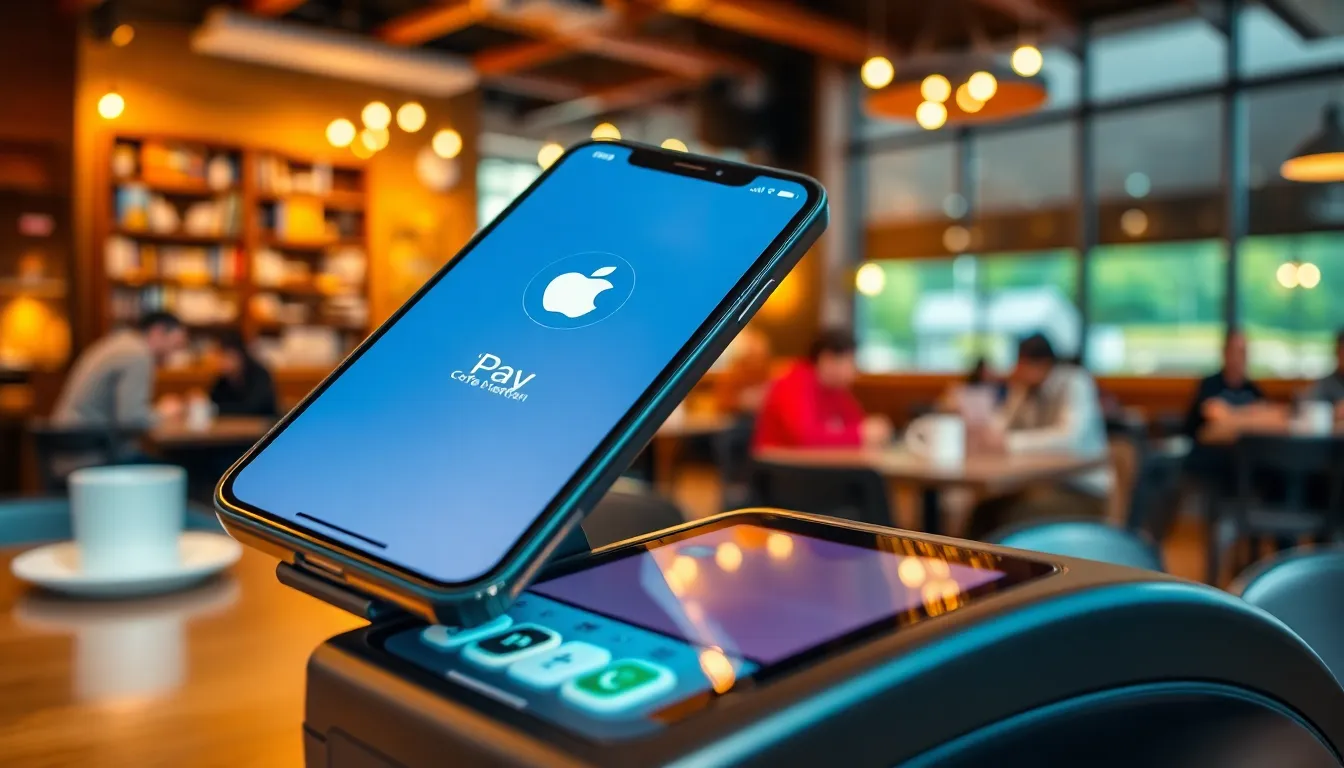Imagine you’re at your favorite café, craving that perfect latte, but your phone’s decided to play hard to get. No Wi-Fi? No problem! Many people wonder if they can still use Apple Pay without a Wi-Fi connection. Spoiler alert: they can!
Overview of Apple Pay
Apple Pay provides a convenient method for making payments using devices like iPhones, iPads, and Apple Watches. Transactions are secure, as the system employs encryption and tokenization to protect financial information. Users link credit cards and debit cards to their Apple Wallet, which allows for quick purchases in stores and online.
Accessibility plays a crucial role in the functionality of Apple Pay. Users can complete transactions even when a Wi-Fi connection is unavailable, relying on cellular data instead. This capability proves beneficial in various scenarios, such as public transit systems or rural areas with limited internet access. Apple Pay uses Near Field Communication (NFC) technology, enabling contactless payments by simply tapping the device at a compatible terminal.
Integration extends beyond retail, encompassing apps for food delivery, transportation, and other services. As many merchants adopt Apple Pay, its user base expands, reflecting a shift towards digital payments. Compatibility with rewards programs and offers enhances the experience further, allowing users to earn points or discounts while using the service.
In addition, Apple Pay streamlines online shopping through support for various websites and apps. By enabling biometric authentication, such as Touch ID or Face ID, it simplifies the checkout process. Security remains a key focus, ensuring that personal and financial information stays protected against fraud.
This seamless blend of convenience, security, and versatility establishes Apple Pay as a valuable tool for managing payments. Users remain empowered to transact confidently without the constant need for Wi-Fi.
How Apple Pay Works

Apple Pay simplifies payment transactions by enabling users to complete purchases using their devices. Users can leverage their iPhones, iPads, and Apple Watches to make payments conveniently and securely.
Contactless Payments Explained
Contactless payments rely on Near Field Communication (NFC) technology for secure transactions. NFC enables devices to exchange data wirelessly when they’re in close proximity, allowing users to tap their smartphones or wearables on compatible payment terminals. This approach ensures quick, efficient transactions without the need to swipe cards or enter PINs. Additionally, Apple Pay utilizes tokenization to protect sensitive card information during transactions, enhancing security and privacy.
Role of Internet Connection
For transactions, an internet connection isn’t always essential. Apple Pay can function seamlessly using cellular data for payments when Wi-Fi is unavailable. Users might encounter this convenience in places like public transit or remote locations. The app securely stores payment information, allowing for swift access even without internet access. Thus, Apple Pay maintains its functionality in diverse environments, making it an adaptable digital payment solution.
Using Apple Pay Without WiFi
Apple Pay allows users to transact without a Wi-Fi connection by relying on cellular data. This feature makes it ideal for making purchases in places like cafés or while traveling.
Conditions for Offline Usage
Apple Pay can function without Wi-Fi in specific conditions. Users must ensure their devices remain connected to a cellular network. It’s essential that the Apple Wallet app is set up in advance, as transactions require prior linking of credit and debit cards. Compatibility with contactless payment terminals also plays a crucial role; not all terminals support offline transactions, but many do, especially in retail settings. Users should also keep the latest version of iOS installed for optimal performance.
Steps to Use Apple Pay Offline
Using Apple Pay offline involves a few simple steps. First, enable cellular data on the device before heading out. Next, tap the Apple Pay icon or double-click the side button to launch the Wallet app. Users should then select the preferred card and place their device near the terminal. The transaction takes only seconds, confirming the payment with a vibration or sound. If users encounter any issues, they can troubleshoot by ensuring their cards are up-to-date in the Wallet app.
Limitations of Offline Transactions
Apple Pay can function without Wi-Fi, but certain limitations can affect its usability during offline transactions. Connection relies heavily on cellular data, meaning users must ensure their devices remain connected. Transactions may face challenges in areas with weak signal strength, impacting successful payments.
Payment processing can experience delays when the connection is unreliable. Users may encounter errors if the payment terminal lacks compatibility with offline transactions. Keeping the Apple Wallet app set up in advance is crucial for offline use; without this, users cannot access their stored payment methods.
Transaction limits apply during offline usage. Users can only make payments up to a certain threshold, which varies by issuer. Device settings impact offline transactions; enabling both Apple Pay and cellular data is necessary for seamless use.
Security features continue to function even without Wi-Fi. Apple Pay transactions rely on encryption and tokenization, ensuring sensitive information remains protected. Users need to verify their identity through Face ID or Touch ID, enhancing security further.
Consideration of updates also plays a role in the effectiveness of offline transactions. Regularly updating the device’s iOS can improve compatibility and performance, ensuring a smoother experience. Users should be aware that location can influence service availability, as some vendors may not support offline transactions at all.
Awareness of these limitations helps users navigate potential issues effectively when using Apple Pay offline. Strategies include checking for a stable cellular connection and ensuring stored payment methods are accessible before leaving Wi-Fi zones.
Apple Pay proves to be a reliable payment solution even without a Wi-Fi connection. Users can confidently make transactions using cellular data or through previously established connections. The technology behind Apple Pay ensures security and efficiency, allowing for quick payments in various environments.
While it’s essential to have the Apple Wallet app set up and to be aware of potential limitations, the convenience of contactless payments remains a significant advantage. By understanding how to navigate offline transactions, users can enhance their shopping experience and avoid disruptions. Overall, Apple Pay stands out as a versatile tool that adapts to users’ needs, ensuring they can manage payments seamlessly, regardless of internet availability.






